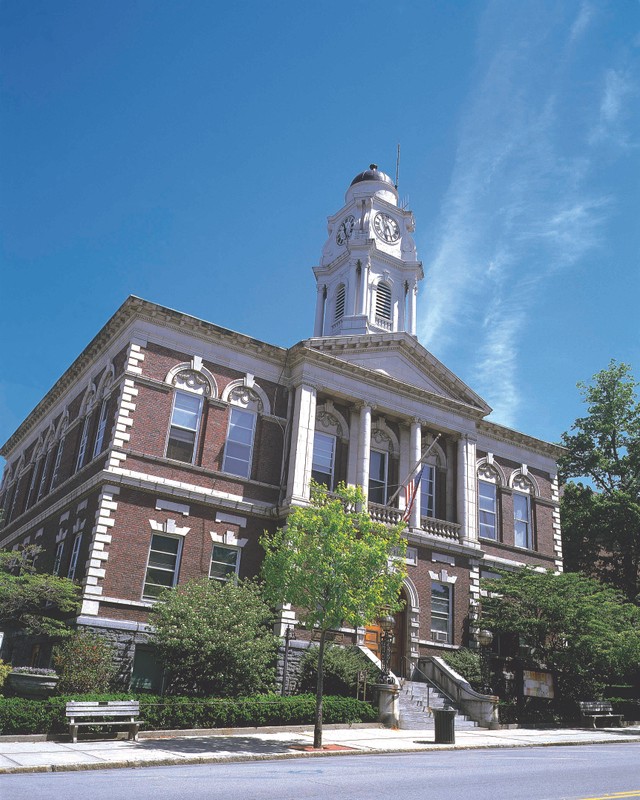Irvington Town Hall
Introduction
Text-to-speech Audio
Images
Image of the Irvington Town Hall

Irvington Clock Tower
.jpg)
Backstory and Context
Text-to-speech Audio
The village of Irvington was growing rapidly when it was formally incorporated in 1872. By the 1890s the village needed more space for government offices, for its existing public library and for a new public assembly hall. At that time the library in Irvington was run by the Mental and Moral Improvement Society in a small building on Main Street. In 1892 the society donated the property to the village for the building of a new government center which would include a larger library and an assembly hall. As part of the arrangement, Irvington would have to built the town hall within 5 years. By 1897 the village couldn’t find a suitable architect and the society agreed to a five year extension.
In 1901, the architect Alfred J. Manning was hired to design a town hall. The town did not have enough money to fund the building. The completion of the town hall was only made possible by the donations of wealthy citizens in Irvington. Some of these donors included Frederick Guiteau, a local estate owner and the chief benefactor of the library, and Helen Gould, daughter of Jay Gould and owner of nearby Lyndhurst. When the town hall was completed the interior contained a variety of civic spaces designed to meet the needs of the community, including municipal offices, a second floor theater, and a library.
Manning used the Colonial Revival style for building the Irvington Town Hall. The inside of the building also contains glass work and mosaics by the studios of Louis Comfort Tiffany, whose father, Charles Lewis Tiffany, had an estate in Irvington. On the building’s main level, the library has plaster walls and dark woodwork, including beams with literary quotations in gold leaf. The 5,000 square foot theater complex, which occupies the top floor, is large enough to seat three hundred people. The theater includes dressing rooms, offices, and a reception area with molded door and window surrounds, wainscoting, and paneled interior doors, all of dark wood.
In the 1960s the library needed more space and took over the original central stair area leading to the theatre. Following revision of state fire and safety codes the theater was determined to be in violation and could no longer be used as a public space. In the 1970s, the Irvington Town Hall Theater Group raised over $100,000 for the theater’s upgrade and restoration. Architect Robert Reilly included an extension of the stair tower to the balcony level, along with later replacement of light fixtures. Remarkably intact, the Irvington Town Hall continues to meet the needs of the community today. The library has been moved to the historic Lord & Burnham office building and is an excellent example of adaptive reuse.
Sources
- Williams, Gray. Jackson, Kenneth T.. Picturing Our Past: National Register Sites in Westchester County. Westchester County Historic Society.
- O'Brien, Austin . Irvington Town Hall. National Register of Historic Places Inventory07191984.
- Irvington New York. Accessed October 22nd 2020. http://www.irvingtonny.gov/.
Picturing Our Past book
Westchester County Historic Society
